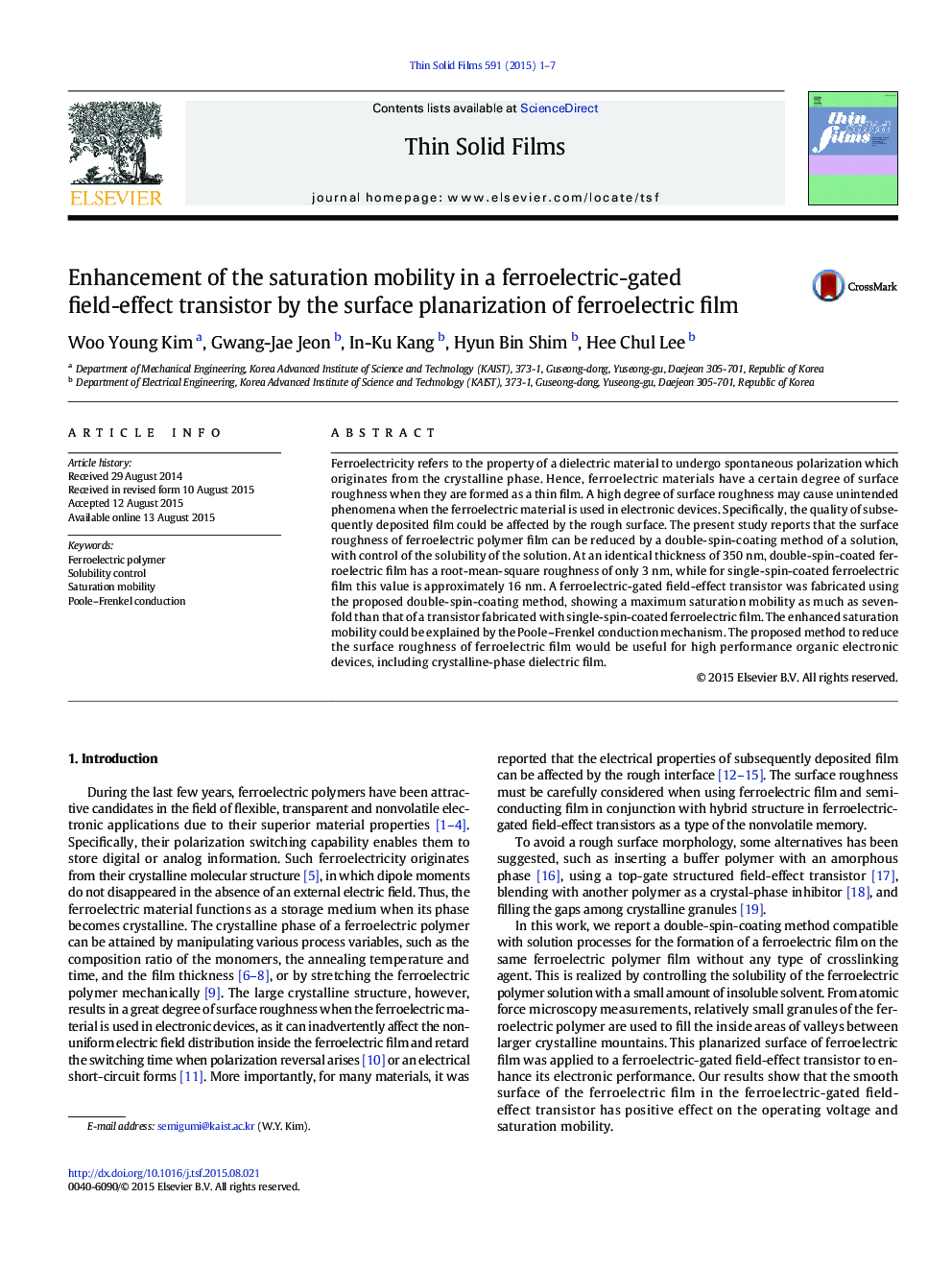| Article ID | Journal | Published Year | Pages | File Type |
|---|---|---|---|---|
| 1664588 | Thin Solid Films | 2015 | 7 Pages |
•Single and double-layer solution-processed polymer ferroelectric films were obtained.•Adjusting the solvent solubility allows making double-layer ferroelectric (DF) films.•The DF film has a smoother surface than single-layer ferroelectric (SF) film.•DF-gated transistor has faster saturation mobility than SF-based transistor.•Solvent solubility adjustment led to higher performance organic devices.
Ferroelectricity refers to the property of a dielectric material to undergo spontaneous polarization which originates from the crystalline phase. Hence, ferroelectric materials have a certain degree of surface roughness when they are formed as a thin film. A high degree of surface roughness may cause unintended phenomena when the ferroelectric material is used in electronic devices. Specifically, the quality of subsequently deposited film could be affected by the rough surface. The present study reports that the surface roughness of ferroelectric polymer film can be reduced by a double-spin-coating method of a solution, with control of the solubility of the solution. At an identical thickness of 350 nm, double-spin-coated ferroelectric film has a root-mean-square roughness of only 3 nm, while for single-spin-coated ferroelectric film this value is approximately 16 nm. A ferroelectric-gated field-effect transistor was fabricated using the proposed double-spin-coating method, showing a maximum saturation mobility as much as seven-fold than that of a transistor fabricated with single-spin-coated ferroelectric film. The enhanced saturation mobility could be explained by the Poole–Frenkel conduction mechanism. The proposed method to reduce the surface roughness of ferroelectric film would be useful for high performance organic electronic devices, including crystalline-phase dielectric film.
